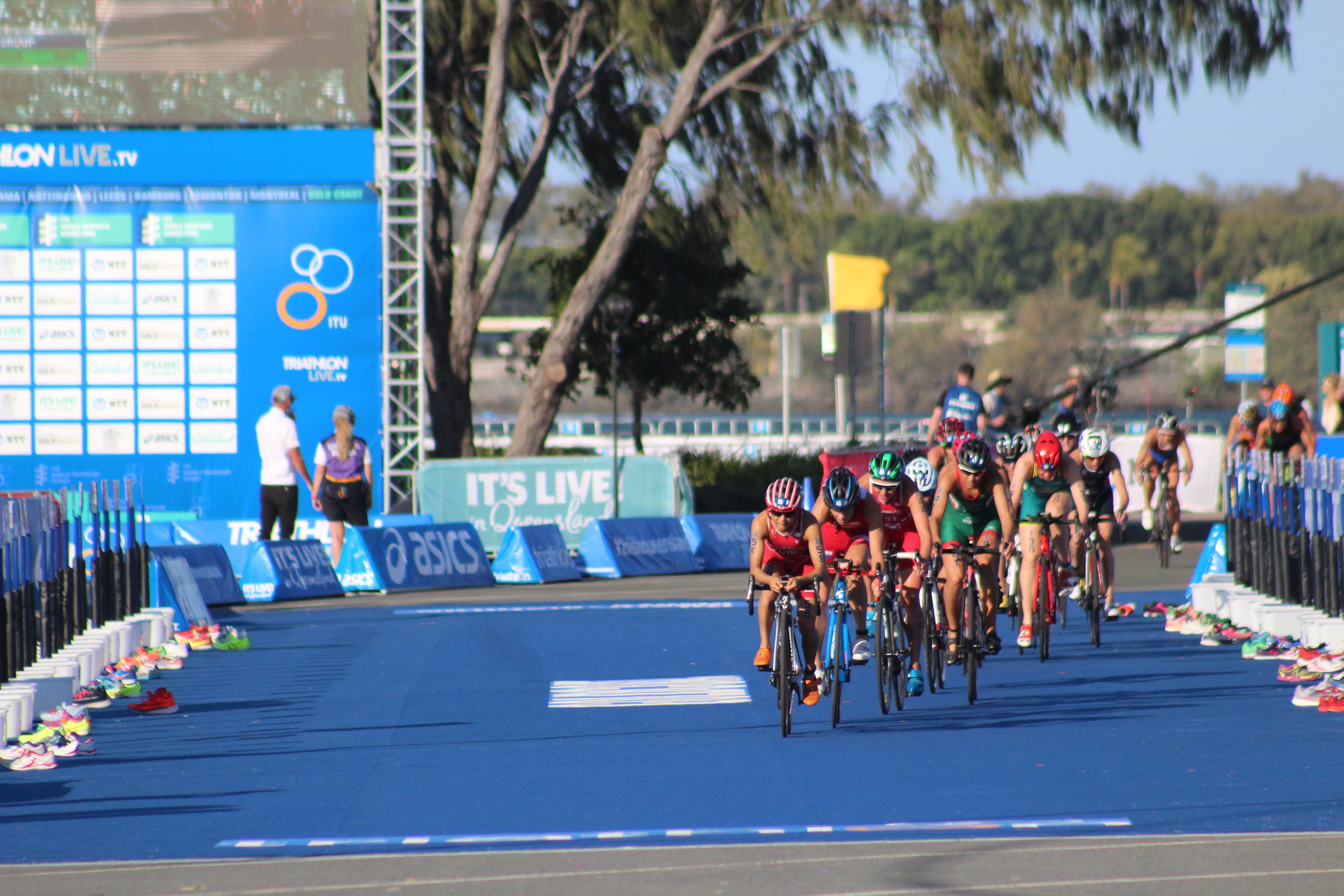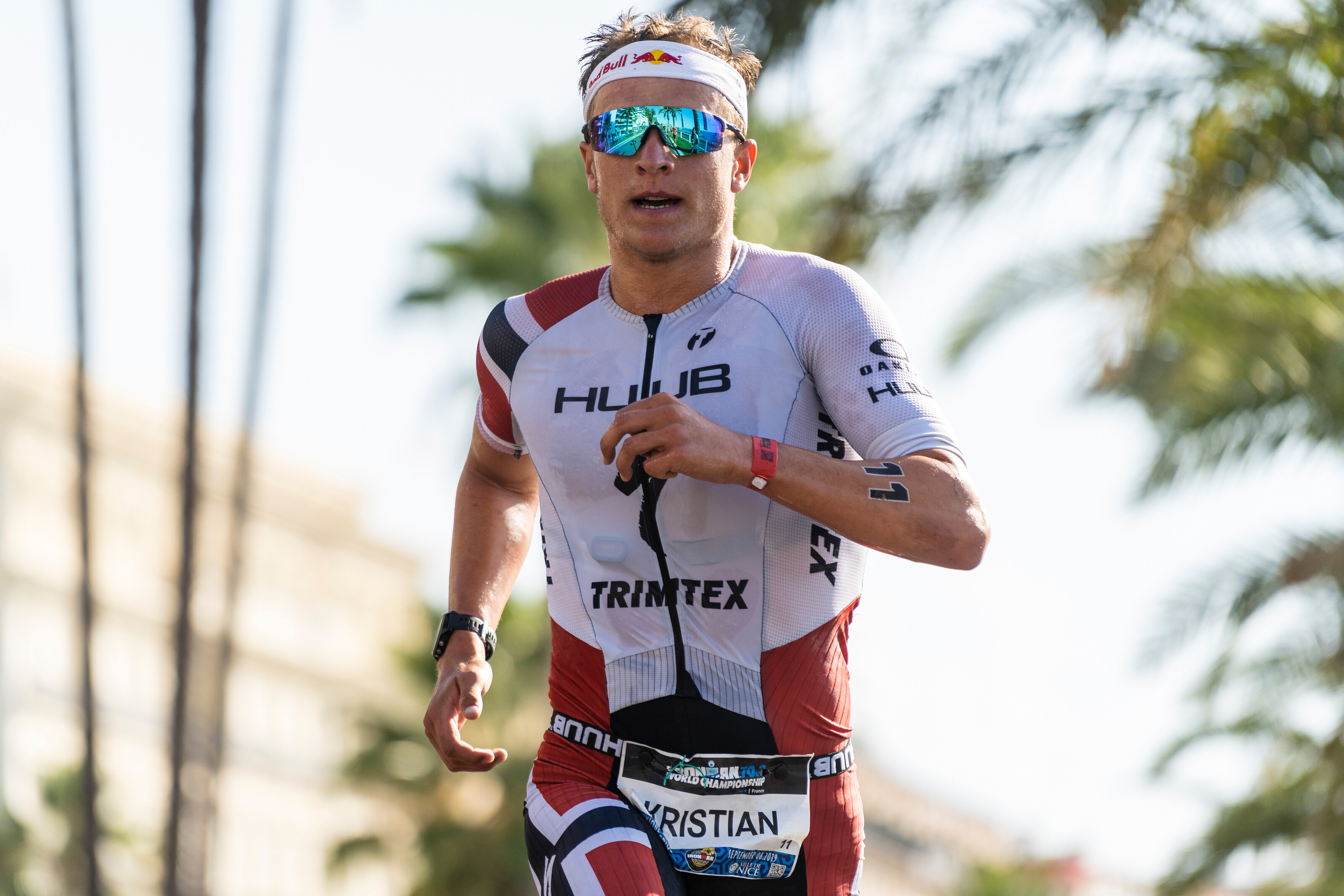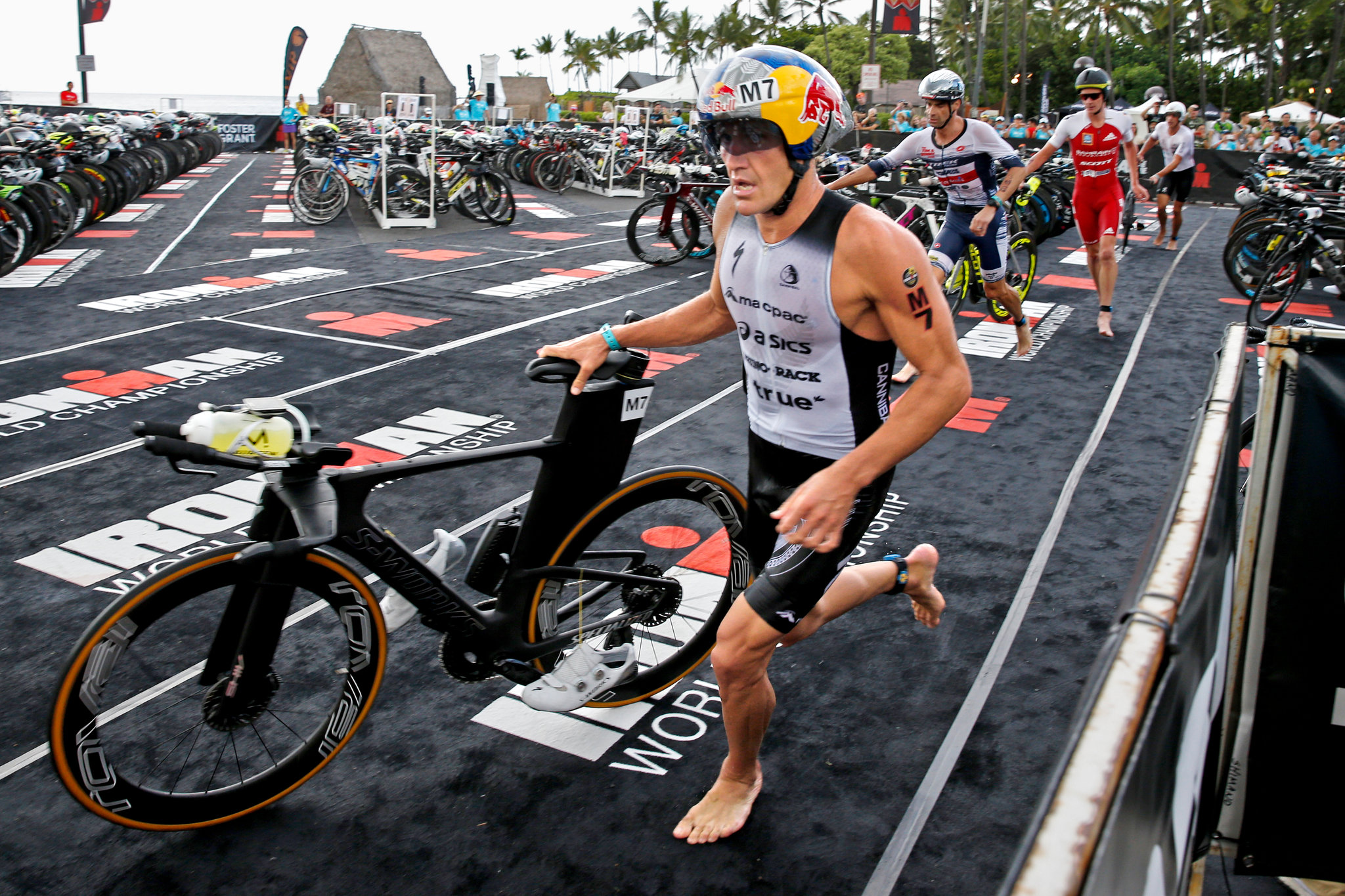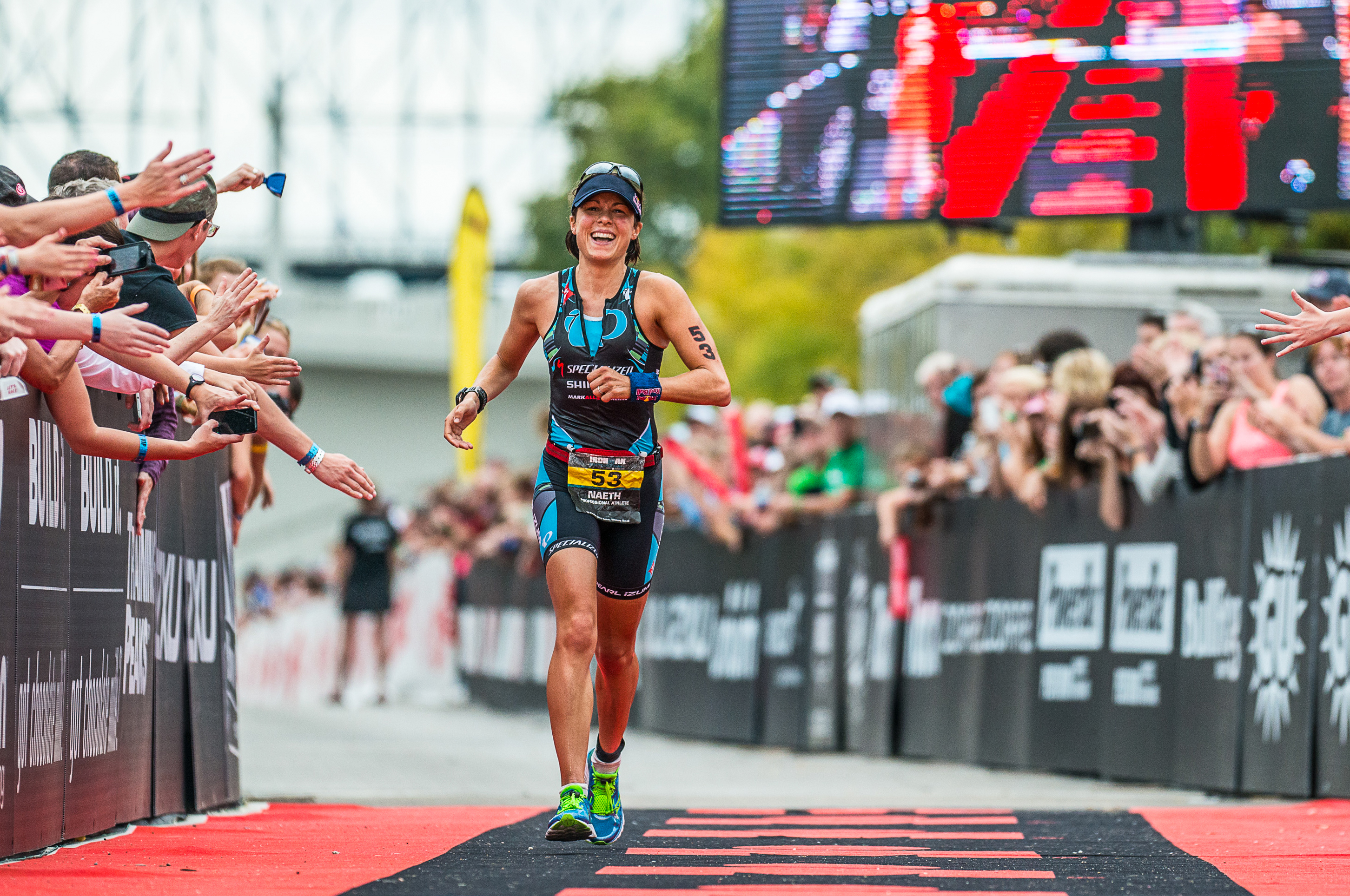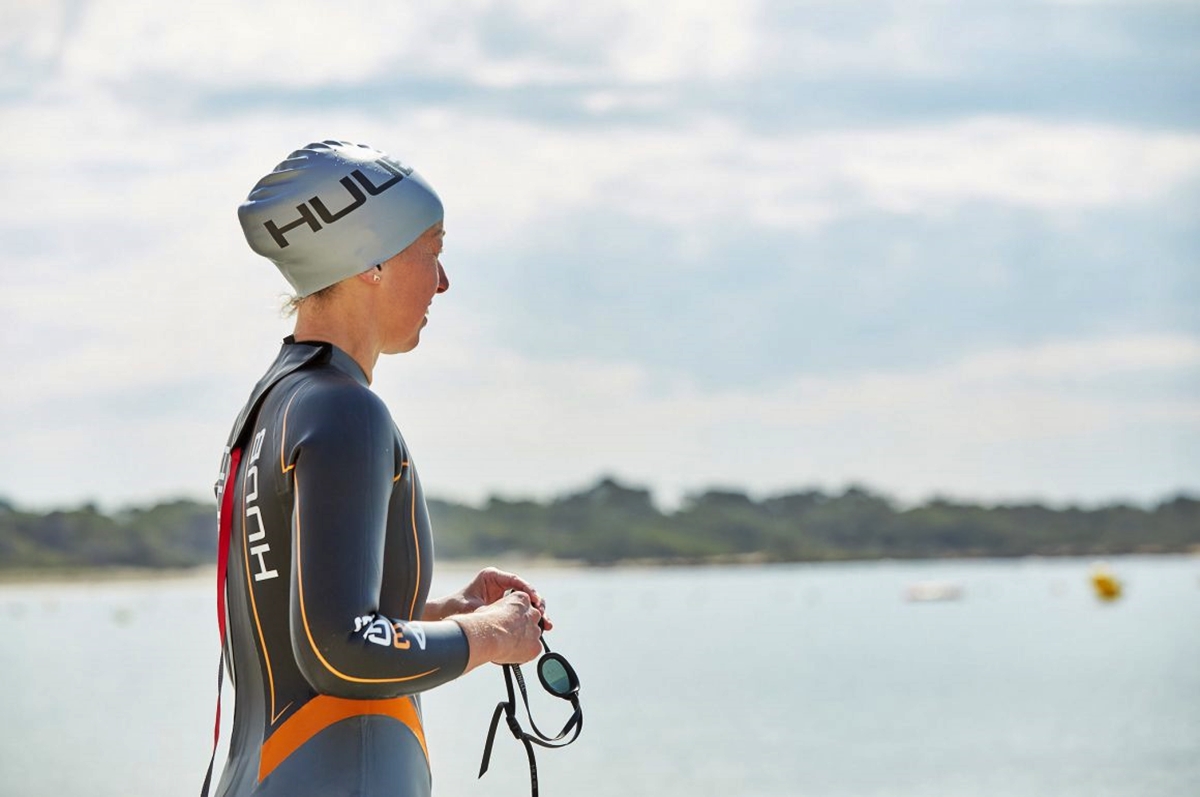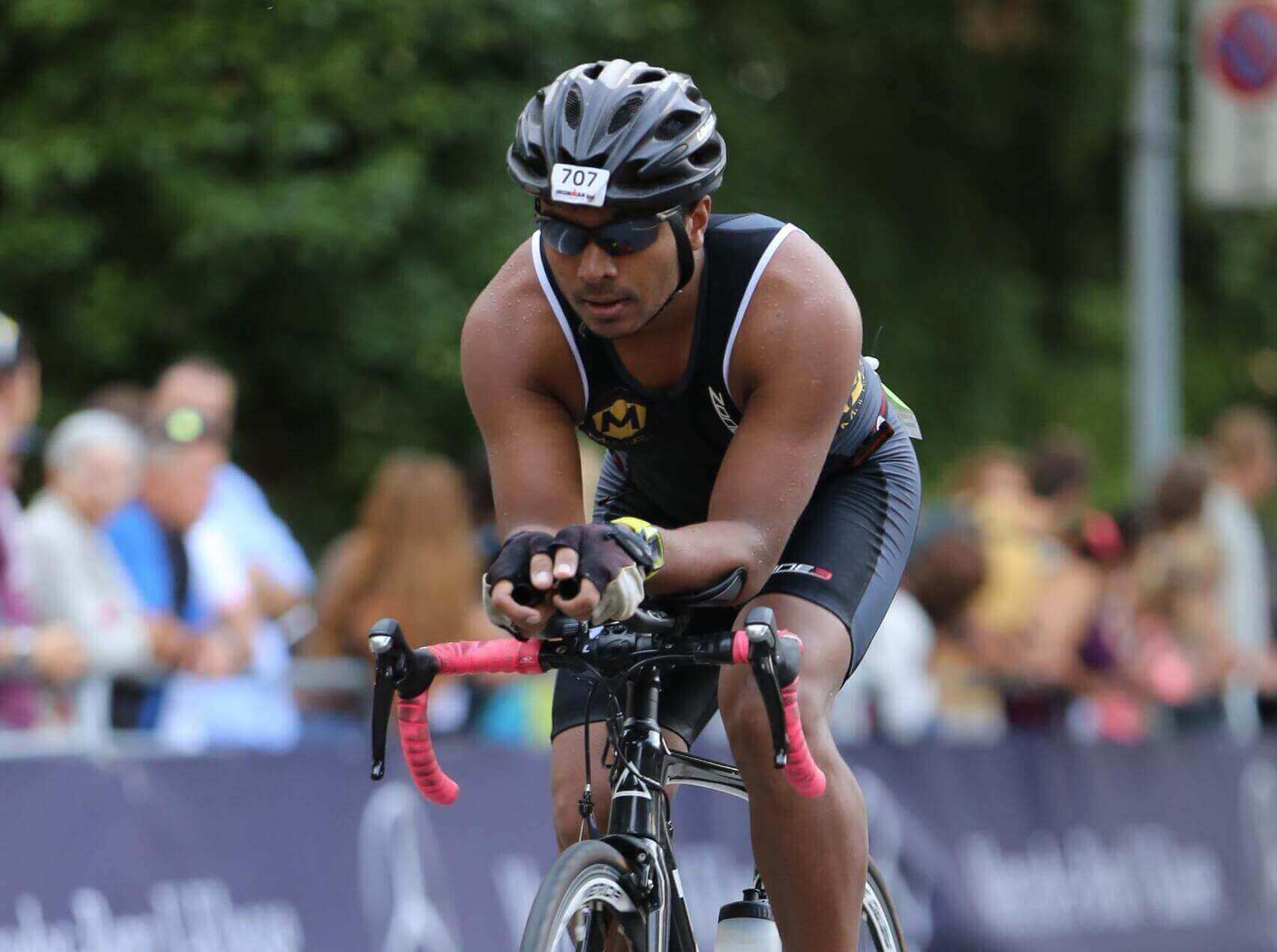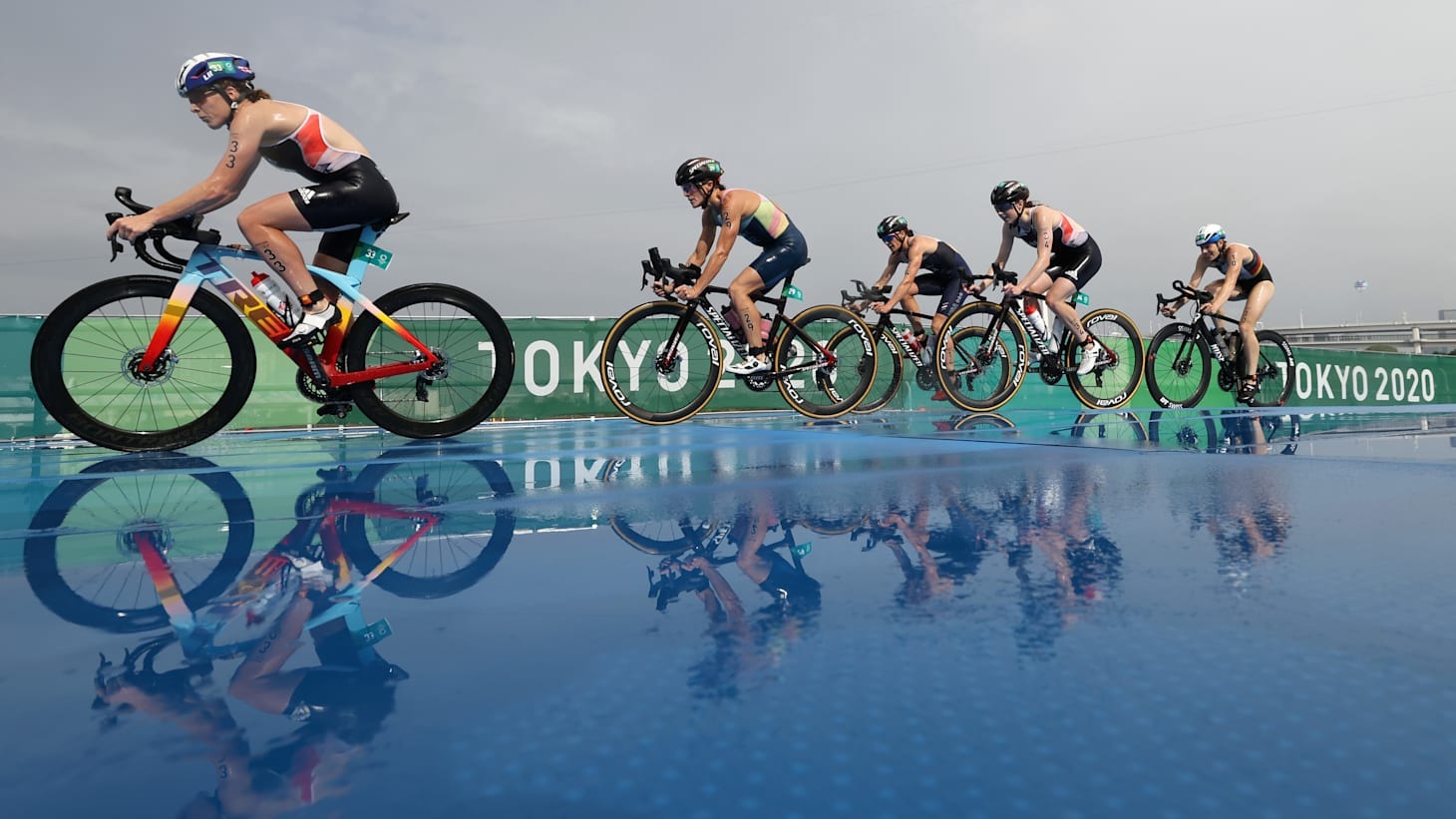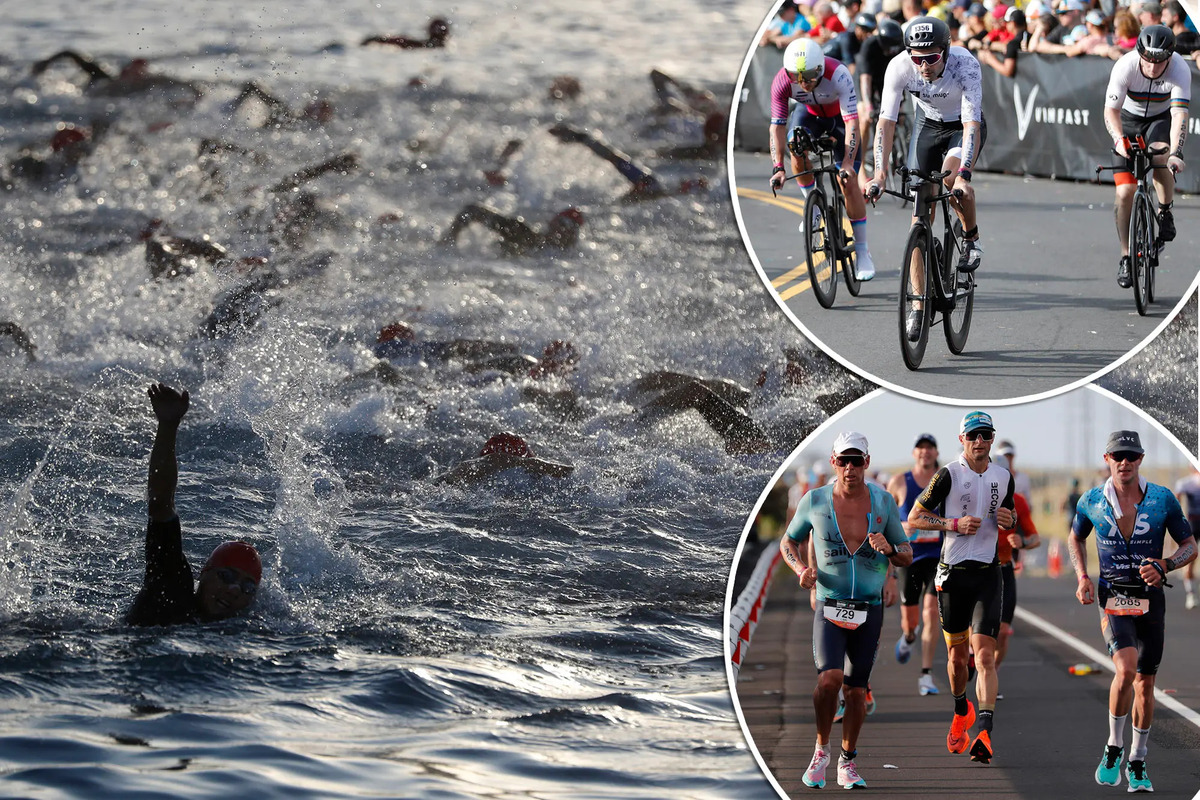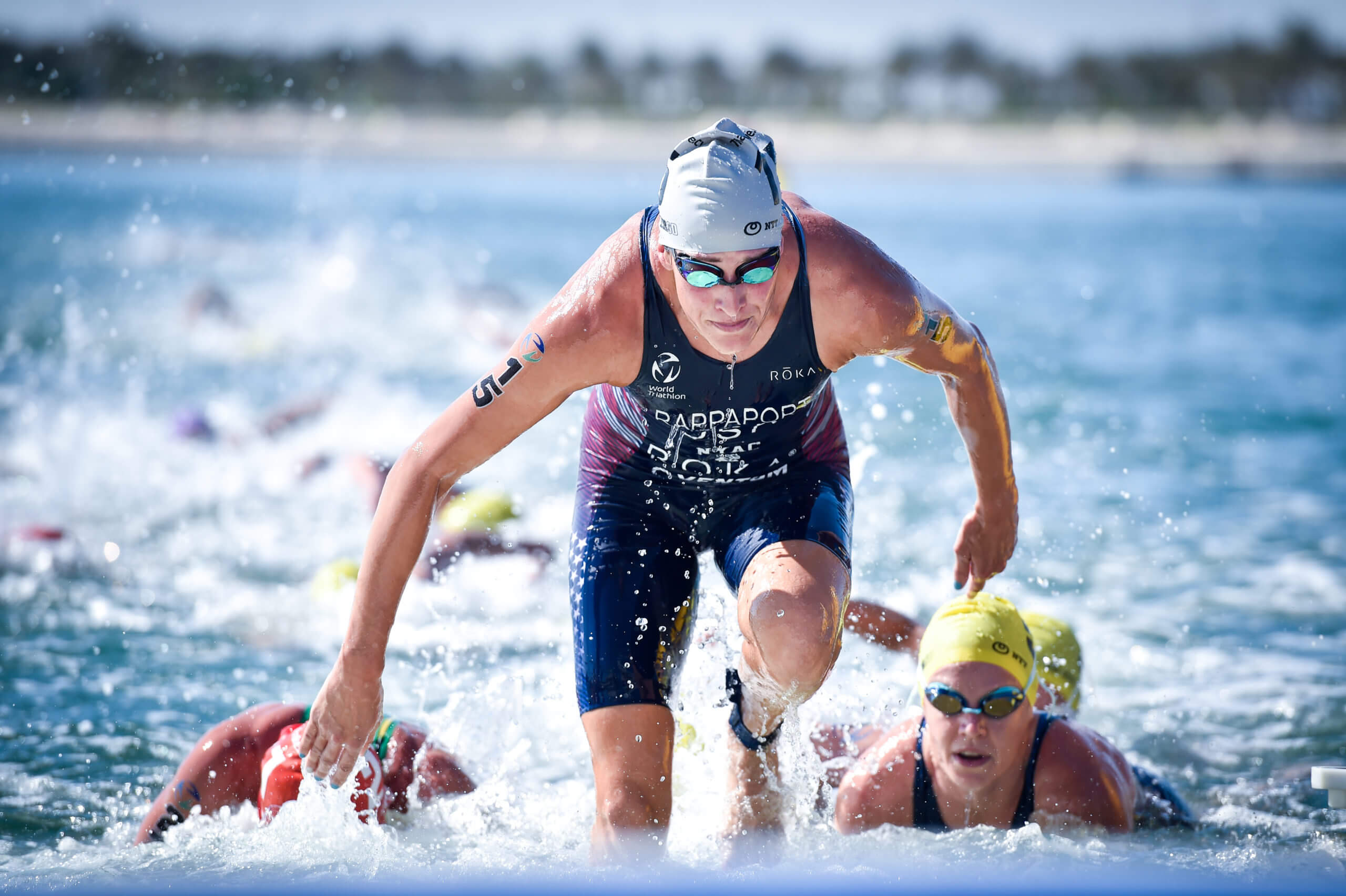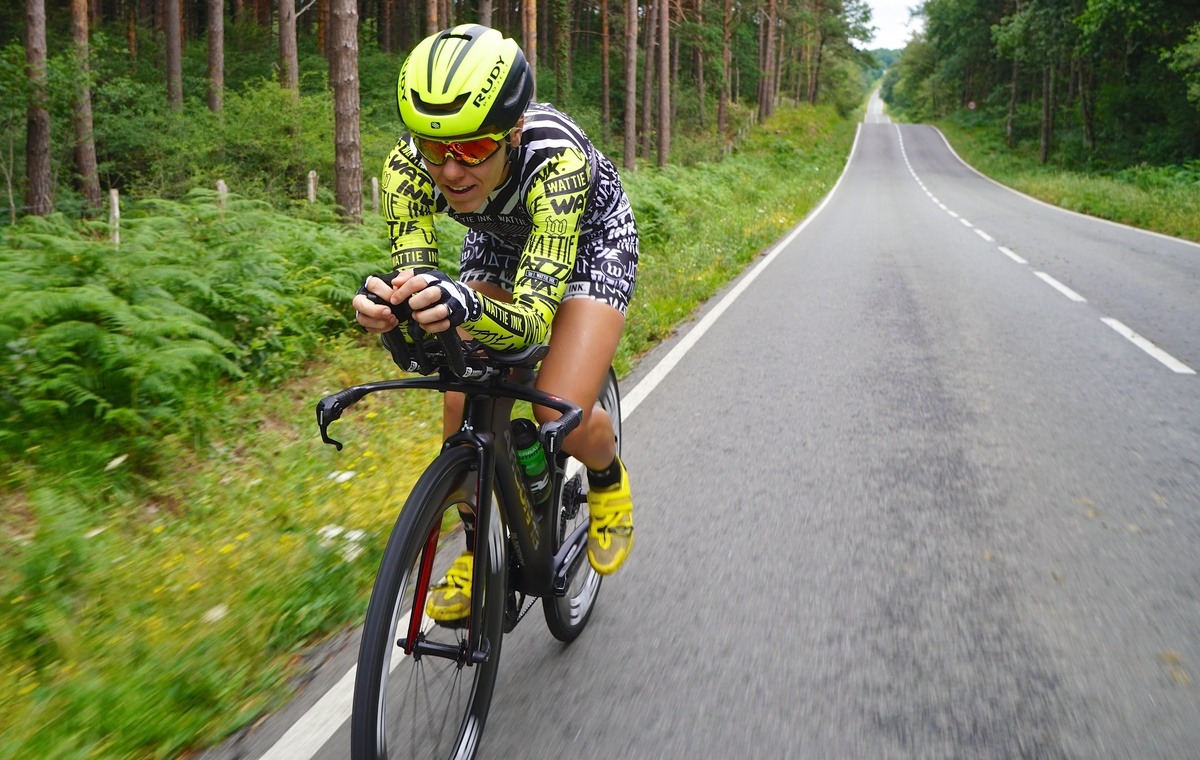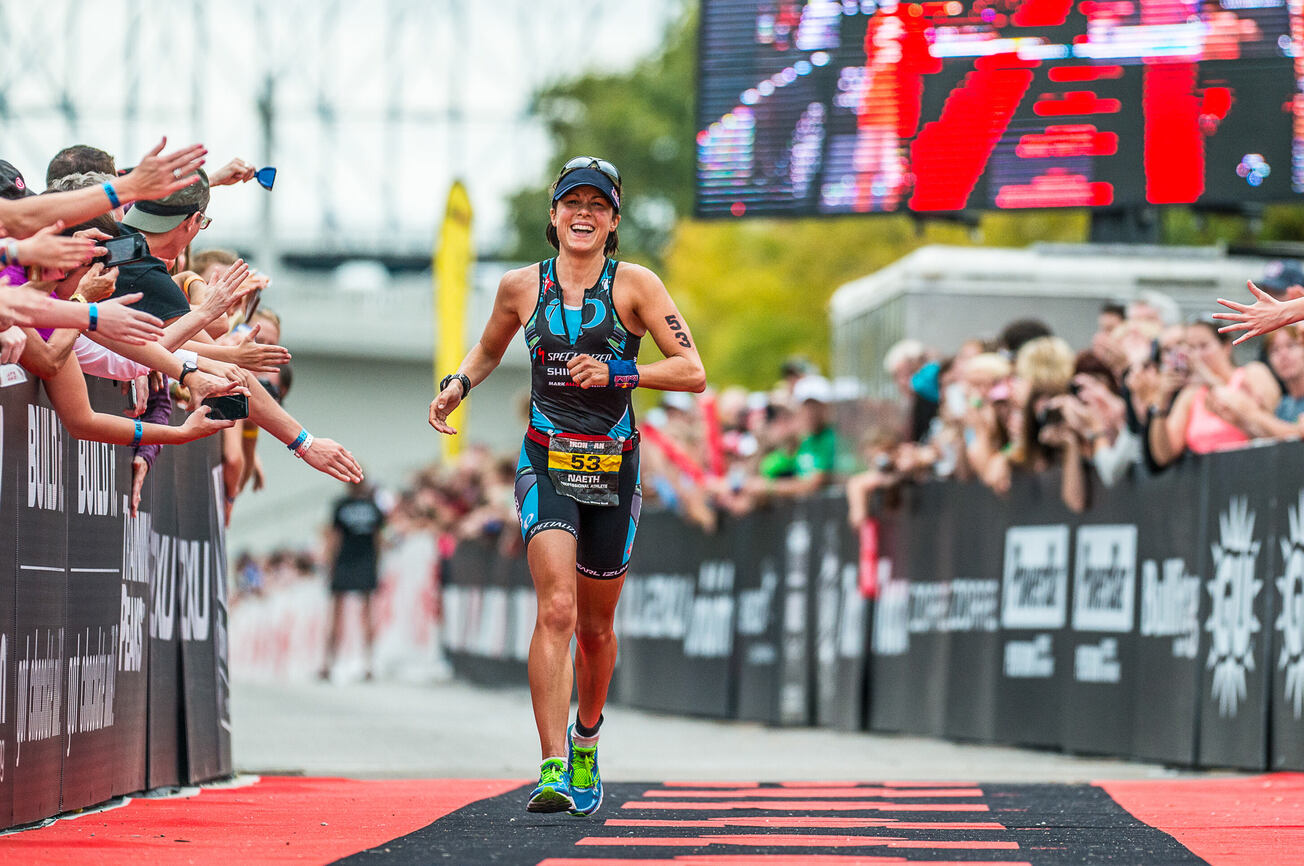

Featured
How To Train For Ironman Triathlon
Modified: January 2, 2024
Get featured in Ironman Triathlon by learning the best training techniques. Transform yourself into a triathlon champion with our comprehensive guide.
Introduction
Participating in an Ironman Triathlon is no small feat. It requires not only physical strength and endurance but also mental fortitude and strategic planning. The Ironman Triathlon, consisting of a 2.4-mile swim, a 112-mile bike ride, and a marathon 26.2-mile run, pushes athletes to their limits and beyond. Whether you’re a seasoned athlete or new to the world of triathlons, proper training and preparation are crucial for success.
In this article, we will delve into the essential steps and strategies to train effectively for an Ironman Triathlon. From choosing the right race to setting realistic goals, building endurance, and developing strength and power, we will cover all aspects of training. Additionally, we will explore the importance of nutrition and hydration, mental preparation, injury prevention, and recovery.
Training for an Ironman Triathlon is a unique journey filled with challenges and triumphs. It requires discipline, dedication, and a willingness to push your body and mind to new limits. However, the sense of accomplishment and personal growth that comes from completing the race is unparalleled.
Whether your goal is to finish your first Ironman Triathlon or improve your performance from previous races, the information in this article will provide you with a comprehensive guide to optimize your training and help you reach your full potential.
Choosing the Right Ironman Triathlon
Selecting the right Ironman Triathlon race is an important first step in your journey to becoming an Ironman. With numerous races taking place around the world, each offering its own unique challenges, it’s essential to consider various factors before making your decision.
One of the key considerations is the location of the race. Do you prefer a coastal race with a swim in the open water? Or perhaps you thrive in a mountainous region with challenging bike and run courses? Consider your strengths as an athlete and choose a race that aligns with your preferences and abilities.
Additionally, think about the climate and time of year when the race takes place. Some athletes thrive in hot and humid conditions, while others perform better in cooler temperatures. Assess your tolerance for different weather conditions and select a race held during a time of year that suits your needs.
The course itself also plays a crucial role. Look at the elevation profile for the bike and run courses, as well as any technical challenges or specific features that may impact your performance. Consider your strengths and weaknesses as a triathlete to determine which type of course will give you the best chance for success.
Furthermore, take into account the reputation and history of the race. Some Ironman Triathlons are known for their exquisite organization and stunning venues, while others may have a legendary status within the triathlon community. Research the feedback from previous participants and choose a race with a positive reputation and a track record of excellence.
Lastly, consider the logistics and practical aspects of the race. Assess the travel requirements, accommodation options, and any additional costs associated with participating in the event. Ensure that you have enough time to commute to the venue, acclimatize to the environment, and familiarize yourself with the race logistics.
Choosing the right Ironman Triathlon can significantly impact your race experience and performance. Take the time to evaluate your preferences, strengths, and logistical considerations to make an informed decision. Remember, the race you choose should inspire and motivate you throughout your training journey, so choose wisely and embark on an unforgettable adventure.
Setting Goals and Planning
Before diving into your Ironman Triathlon training, it’s essential to set clear and realistic goals. Goals not only provide direction but also serve as motivation throughout your training journey. By setting specific objectives, you can structure your training plan and measure your progress effectively.
Start by establishing your overall goal for the race. Is it to simply finish the race within the time limit? Or do you have a specific time goal in mind? Consider your current fitness level and previous race performances to set a goal that challenges you but is attainable with dedicated training.
Breaking down your overall goal into smaller, manageable milestones can help you stay focused and motivated. Set intermediate goals for each leg of the race, such as achieving a certain swim split time or improving your average speed on the bike. This approach allows you to track your progress and make adjustments to your training as needed.
Once your goals are set, it’s time to plan your training schedule. A well-structured training plan is essential to ensure proper progression and avoid overtraining or burnout. Consider factors such as your current fitness level, available training time, and any other commitments or obligations you may have.
It’s crucial to include a mix of workouts in your training plan, including swim, bike, and run sessions. Strive for a balance between endurance-building workouts, interval training to improve speed, and strength and conditioning exercises. Additionally, allocate time for rest and recovery to prevent injuries and allow your body to adapt and grow stronger.
Be flexible with your training plan and be prepared to make adjustments along the way. Life can throw unexpected challenges, such as illness or injury, that may require modifications to your training schedule. Listen to your body, be mindful of your limits, and make adjustments as necessary to ensure your long-term progress and well-being.
Alongside your training plan, consider incorporating other elements of preparation, such as mental training and race strategy. Visualize yourself crossing the finish line, practice positive self-talk, and develop strategies to overcome physical and mental barriers during the race. Mental preparation is just as important as physical training when it comes to conquering an Ironman Triathlon.
Setting clear and attainable goals and meticulously planning your training will lay the foundation for a successful Ironman Triathlon journey. Remember to revisit and adjust your goals as you progress, stay adaptable with your training plan, and embrace the challenges and triumphs along the way. With the right mindset and preparation, you’ll be well on your way to conquering the Ironman Triathlon.
Building Endurance
Building endurance is a crucial aspect of training for an Ironman Triathlon. Endurance is the ability to sustain prolonged physical effort without fatigue, and it plays a significant role in each leg of the race. By gradually increasing your endurance capacity, you will be better equipped to tackle the challenges of the grueling 140.6-mile race.
To build endurance, start by incorporating long, steady-state training sessions into your routine. These sessions can be in the form of long runs, bike rides, or pool sessions. Aim to increase the duration of these workouts over time, progressively extending the distance or length of time spent on each activity.
Additionally, consider adding interval training to your regimen. Intervals involve alternating periods of high-intensity efforts with periods of active recovery. This type of training not only improves cardiovascular fitness but also helps build endurance by challenging your body’s ability to work at higher intensities for longer durations.
It’s important to note that endurance training is not solely about increasing volume. Quality is just as important as quantity. Incorporate specific workouts that target the demands of each leg of the triathlon. For example, include simulated race pace runs or bike rides to familiarize your body with the effort required to complete the race.
Cross-training is another effective way to build overall endurance. Engaging in activities such as swimming, cycling, rowing, or using an elliptical machine can help diversify your workouts, reduce the risk of overuse injuries, and improve your aerobic capacity. Cross-training also provides a mental break from your primary sport, keeping your training fresh and exciting.
To optimize your endurance training, consider working with a coach or joining a triathlon training group. They can provide guidance, structure, and accountability to ensure you’re following an appropriate training plan that gradually builds your endurance while reducing the risk of overtraining or injury.
Remember that building endurance is a gradual process. It takes time for your body to adapt and become more efficient at utilizing oxygen and fuel during exercise. Be patient with yourself and focus on consistent, progressive training. Listen to your body, rest when needed, and prioritize recovery to avoid burnout and promote optimal performance.
By dedicating time to building endurance in your training, you’ll strengthen your body’s ability to endure the physical demands of the Ironman Triathlon. With perseverance and a well-structured training plan, you’ll be prepared to conquer the race’s challenging distances and achieve your goals.
Developing Strength and Power
In addition to building endurance, developing strength and power is essential for success in an Ironman Triathlon. Strength and power training can improve muscular strength, boost efficiency, and enhance performance across all three disciplines of the race. Incorporating targeted strength workouts into your training regimen will help you become a more well-rounded and resilient triathlete.
One of the key areas to focus on when it comes to strength and power development is the lower body. Strong legs are essential for powering through the bike portion of the race and maintaining a steady pace during the run. Include exercises such as squats, lunges, deadlifts, and calf raises to target the major muscle groups in your legs.
Core strength is another crucial aspect of developing strength and power. A strong core helps stabilize your body during the swim, bike, and run, improving your efficiency and reducing the risk of injury. Incorporate exercises like planks, Russian twists, and bicycle crunches to strengthen your core muscles.
Upper body strength shouldn’t be neglected either, as it plays a role in maintaining proper form during the swim and providing stability during the bike and run. Include exercises such as push-ups, pull-ups, and shoulder presses to strengthen your upper body muscles.
Incorporating plyometric exercises into your training can help develop power and explosiveness. These high-intensity exercises, such as box jumps, squat jumps, and burpees, improve your ability to generate force quickly, which is beneficial for sprinting, climbing hills, and accelerating during the race.
Resistance training using free weights, resistance bands, or weight machines can also be beneficial in developing strength. Gradually increase the weight or resistance as your strength improves to continue challenging your muscles.
It’s important to balance your strength and power training with your cardiovascular workouts. Prioritize quality over quantity, focusing on the specific movements and muscle groups relevant to triathlon. Aim for two to three strength training sessions per week, giving your muscles time to recover between sessions.
Remember to listen to your body and be mindful of your form while performing strength exercises. If you’re new to strength training, consider working with a qualified strength and conditioning coach to ensure proper technique and progression.
By incorporating strength and power training into your triathlon training program, you’ll enhance your overall performance and reduce the risk of injury. Developing strength in key muscle groups, improving core stability, and increasing power through explosive exercises will give you the physical edge needed to excel in the Ironman Triathlon.
Improving Speed and Stamina
Improving speed and stamina is crucial for achieving your best performance in an Ironman Triathlon. While endurance forms the foundation of your training, focusing on speed and stamina will help you become a faster and more efficient triathlete. By incorporating specific workouts and strategies into your training plan, you can enhance your overall race pace and endurance capacity.
Interval training is a highly effective method for improving speed and stamina. These workouts involve alternating between periods of high-intensity efforts and periods of active recovery. For example, on the track, you can incorporate interval sessions such as 400-meter repeats or Yasso 800s, where you run at target race pace for a set distance and then rest for a specific period before repeating the cycle. Interval training challenges your cardiovascular system and trains your body to sustain fast speeds for longer periods.
Tempo runs are another valuable tool for improving speed and stamina. These runs involve maintaining a comfortably hard pace, just below your lactate threshold, for an extended period. Tempo runs help improve your body’s ability to clear lactate and sustain a faster pace for longer distances.
Incorporating hill repeats into your training can also boost both speed and stamina. Running or cycling uphill forces your muscles to work harder, improving strength and power. Hill repeats not only boost your ability to maintain speed on inclines but also enhance your overall endurance and efficiency.
To improve stamina, consider incorporating long, steady-state workouts into your training routine. These are extended duration workouts where you maintain a slightly lower intensity than your race pace. These sessions build mental and physical endurance, train your body to sustain effort for extended periods, and improve your aerobic capacity.
To complement your training, consider cross-training activities that promote speed and stamina. High-intensity interval training (HIIT) sessions on a stationary bike or in the pool can help improve cardiovascular fitness and boost your endurance. Additionally, incorporating activities such as hill sprints, stair climbing, or plyometric exercises can enhance your explosiveness and overall speed.
Consistency is key when aiming to improve speed and stamina. Gradually increase the intensity or duration of your workouts over time to avoid overtraining and minimize the risk of injury. Rest and recovery periods are also crucial to allow your body to adapt to the increased demands of your training.
As you work on improving your speed and stamina, be sure to track your progress and periodically reassess your training targets. Setting benchmarks and monitoring your performance will motivate you and allow you to adjust your training plan accordingly.
By incorporating speed and stamina-focused workouts into your training program, you’ll develop the capacity to maintain a faster pace and sustain effort for the duration of the Ironman Triathlon. With consistent training and perseverance, you’ll be well-prepared to achieve your goals and achieve your best possible race performance.
Nutrition and Hydration
Proper nutrition and hydration are vital components in preparing for and completing an Ironman Triathlon. Fueling your body with the right nutrients and staying hydrated throughout your training and on race day will optimize your performance, aid in recovery, and help prevent fatigue and injury. Here are some key considerations for nutrition and hydration during an Ironman Triathlon.
Fueling your body with a well-balanced diet is essential for meeting the energy demands of your training. Include a variety of whole foods such as lean proteins, complex carbohydrates, healthy fats, fruits, and vegetables in your meals. Aim to consume a diet rich in nutrient-dense foods that provide sustained energy and promote overall health.
Carbohydrates are a crucial fuel source for endurance activities. Prioritize complex carbohydrates such as whole grains, legumes, and starchy vegetables to provide a steady release of energy. Include a mix of carbohydrates, proteins, and fats in your pre-race and post-race meals, ensuring proper recovery and replenishment of glycogen stores.
During your longer training sessions, practice your race-day nutrition strategy. Experiment with different types and brands of sports drinks, gels, energy bars, and other portable fuel options to find what works best for you. Aim to consume a combination of carbohydrates and electrolytes to maintain energy and hydration levels throughout your training sessions and on race day.
Hydration is key to maintaining performance and preventing dehydration during training and on race day. Develop a hydration plan that accounts for your individual sweat rate and the duration and intensity of your workouts. Monitor your urine color as an indicator of hydration levels, aiming for pale yellow to clear urine.
In longer training sessions and on race day, consider incorporating a mix of water and electrolyte-rich sports drinks to replenish the minerals lost through sweat. Electrolytes help maintain proper fluid balance and aid in muscle contraction. Experiment with different hydration strategies during training to find what works best for you.
Timing is crucial when it comes to nutrition and hydration during a race. Develop a race-day nutrition plan that includes consuming carbohydrates and fluids at regular intervals, customized to your individual needs. Practice this plan during your training to ensure its effectiveness and identify any adjustments needed.
Remember that every athlete’s nutrition and hydration needs are unique, so it’s essential to listen to your body, experiment, and find a strategy that works best for you. Consider consulting with a sports nutritionist or registered dietitian who specializes in endurance sports to help you develop a personalized nutrition and hydration plan.
By prioritizing proper nutrition and hydration throughout your training and on race day, you’ll optimize your performance, enhance your endurance, and increase your chances of successfully completing an Ironman Triathlon. Consistency, experimentation, and personalized strategies are the keys to fueling your body for success.
Mental Preparation and Strategy
Mental preparation and strategy are just as important as physical training when it comes to tackling an Ironman Triathlon. Developing a strong mental mindset and adopting effective race strategies will help you overcome challenges, stay focused, and maintain motivation throughout the race. Here are some key considerations for mental preparation and strategy.
Visualize success: Use the power of visualization to mentally rehearse each leg of the race. Visualize yourself swimming confidently through the open water, cycling with power and efficiency, and running strong across the finish line. Engaging in positive visualization helps build confidence and prepares you for the physical and mental demands of the race.
Practice mental toughness: Ironman Triathlons are not only physically challenging but also mentally demanding. Develop mental toughness through your training by pushing yourself out of your comfort zone, embracing discomfort, and persevering through tough workouts. This mental resilience will translate into the race when faced with obstacles and fatigue.
Set realistic expectations: While it’s important to set ambitious goals, it’s equally important to set realistic expectations for your race. Understand that an Ironman Triathlon is a long and demanding event, and unexpected factors may arise. Be flexible and adaptable, and focus on giving your best effort on race day, regardless of the circumstances.
Break the race into segments: Rather than overwhelming yourself with the entire 140.6-mile distance, break the race into smaller, manageable segments. Focus on each leg of the race individually, setting mini-goals for yourself along the way. By focusing on one segment at a time, you can maintain mental focus and stay motivated throughout the race.
Develop a race-day strategy: Create a race-day plan that includes pacing strategies, nutrition and hydration goals, and mental cues. Follow your plan, but be prepared to adjust if necessary. Anticipate potential challenges and have strategies in place to overcome them, such as positive self-talk or focusing on a specific mantra or image during difficult moments.
Practice mental relaxation techniques: Incorporate relaxation techniques such as deep breathing, mindfulness, or meditation into your training and pre-race routines. These techniques help calm your mind, reduce anxiety, and improve focus. By practicing them, you’ll be equipped with tools to stay calm and composed during the race.
Embrace positive self-talk: Your thoughts and internal dialogue can greatly impact your performance. Replace negative thoughts with positive and encouraging self-talk. Remind yourself of your training, your strengths, and the progress you’ve made. Use affirmations to boost your confidence and maintain a positive mindset throughout the race.
Surround yourself with support: Ironman Triathlons can be physically and mentally challenging, so it’s important to have a support system in place. Connect with fellow triathletes, join training groups, and seek encouragement from friends and family. Having a support network can provide motivation, accountability, and emotional support during the highs and lows of your Ironman journey.
By focusing on mental preparation and strategy, you’ll cultivate the mindset needed to tackle the challenges of an Ironman Triathlon. With visualization, mental toughness, realistic expectations, and a well-developed race-day strategy, you’ll be able to navigate the race with confidence, resilience, and a strong mental game.
Injury Prevention and Recovery
Injury prevention and recovery are essential components of an Ironman Triathlon training program. As you push your body to its limits during intense training sessions, it’s crucial to prioritize injury prevention and allow for proper recovery to maintain your long-term health and performance. Here are some key considerations for injury prevention and recovery.
Include strength and flexibility training: Incorporating strength and flexibility exercises into your training routine plays a vital role in preventing injuries. Strengthening your supporting muscles and improving flexibility can enhance your stability and reduce the risk of overuse injuries. Focus on exercises that target areas prone to injury in triathletes, such as the hips, knees, ankles, shoulders, and core.
Listen to your body: Pay attention to any signs or symptoms of potential injury, such as persistent pain, discomfort, or fatigue. If you experience any issues, take a step back and allow yourself time to recover. Pushing through minor aches and pains can lead to more significant injuries. Be proactive in seeking medical help or consulting with a physical therapist if necessary.
Prioritize rest and recovery: Recovery is just as important as training itself. Make sure to schedule regular rest days and incorporate active recovery activities such as light swimming, cycling, or yoga into your routine. Additionally, aim for quality sleep, as it is essential for tissue repair and muscle regeneration. Proper rest and recovery will allow your body to adapt to the stresses of training, preventing fatigue and reducing the risk of injuries.
Implement cross-training: Engaging in activities other than triathlon training can give your body a break from repetitive motions and reduce the risk of overuse injuries. Consider incorporating low-impact activities like swimming, yoga, or strength training into your schedule. These activities can provide different physical challenges, enhance overall fitness, and help prevent muscle imbalances.
Maintain a balanced training load: Avoid sudden increases in training volume and intensity, as this can lead to overtraining and injuries. Gradually progress your training load to allow your body to adapt and minimize the risk of overuse injuries. Monitor your training volume and listen to your body’s signals of fatigue or burnout to ensure a healthy balance.
Support your body with proper nutrition: Adequate nutrition plays a vital role in injury prevention and recovery. Ensure you are consuming a well-balanced diet that includes a variety of micronutrients, vitamins, and minerals to support tissue repair and muscle recovery. Hydrate properly to aid in the recovery process and reduce the risk of cramps and dehydration-related injuries.
Seek professional guidance: If you have any concerns about injuries or recovery, don’t hesitate to seek guidance from healthcare professionals. A sports medicine physician, physical therapist, or a qualified coach can provide valuable advice specific to your needs and help you prevent and treat injuries effectively.
By prioritizing injury prevention and recovery, you’ll be able to maintain your health, performance, and consistency in your training. Remember to be proactive in taking care of your body, listen to its signals, and make adjustments when necessary. With proper injury prevention and recovery, you’ll be better positioned to reach your Ironman Triathlon goals while minimizing the risk of setbacks.
Conclusion
Training for an Ironman Triathlon is a challenging yet rewarding journey that requires dedication, discipline, and a comprehensive approach. By following the steps outlined in this article and integrating them into your training plan, you can optimize your preparation and increase your chances of a successful race.
Choosing the right race, setting realistic goals, building endurance, developing strength and power, improving speed and stamina, prioritizing nutrition and hydration, mentally preparing, and taking steps to prevent injuries and promote recovery are all crucial elements of a well-rounded training program.
Remember that the journey to becoming an Ironman is not just about the end goal; it’s also about the personal growth, mental resilience, and sense of accomplishment that comes from pushing your limits and embracing the challenges along the way.
As you embark on your Ironman Triathlon training, embrace the process, give yourself grace, and stay committed to your goals. Listen to your body, trust in your training, and be adaptable to make adjustments as needed. Surround yourself with a supportive community, seek guidance from professionals when necessary, and celebrate your progress and achievements.
Whether you’re aiming to complete your first Ironman Triathlon or looking to improve your performance, the training principles and strategies discussed in this article will be invaluable in your journey toward becoming an Ironman. Stay disciplined, stay motivated, and enjoy the ride. The finish line awaits, and with proper training and determined effort, you’ll cross it with pride as a true Ironman.
